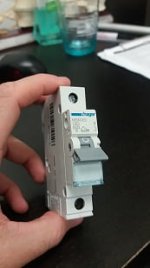barbs00
100 W
Hi All,
Looking for advice regarding over current protection for my ebike.
I have a BBSHD and 52v 14ah battery.
What kind of fuse should I get in terms of rated voltage and current?
Would a simple inline fuse suffice?
They all seems to be rated for only 12v - I assume these are not good as the voltage is so much lower?
I also see that some ppl are using solar circuit breakers like this....
https://www.amazon.com/MidNite-Solar-Breaker-150VDC-MNEPV50/dp/B00BSYSTN2
Not sure of the advantage of this over a simple fuse?
Cheers
Looking for advice regarding over current protection for my ebike.
I have a BBSHD and 52v 14ah battery.
What kind of fuse should I get in terms of rated voltage and current?
Would a simple inline fuse suffice?
They all seems to be rated for only 12v - I assume these are not good as the voltage is so much lower?
I also see that some ppl are using solar circuit breakers like this....
https://www.amazon.com/MidNite-Solar-Breaker-150VDC-MNEPV50/dp/B00BSYSTN2
Not sure of the advantage of this over a simple fuse?
Cheers


